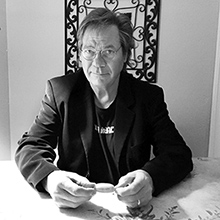Heading down New York’s West Side Highway on a late summer afternoon, the thunder storms kicked up and I was worried that my planned Impossible photo shoot would be a washout. After I parked and left my bags in the studio, the rain stopped and the sun started to peak through the clouds. I grabbed my SLR 680 and 4 packs of Impossible PX600 and headed towards the river. It was hot and humid and I was worried about the film’s sensitivity, given my past experience with earlier versions of the film. I knew I needed to protect the film upon exit, so I made sure I had plenty of black cards from previous PX film packs. To my pleasant surprise, the heat and humidity did not adversely impact processing, it was very consistent. If anything, it may have moved the tone to the warm side, but I have never minded that. I wound my way down the river and headed east to City Hall Park. The fountain and gaslights make you feel like you are back in the 19th Century. I showed some of these images to my friend Elsa Dorfman and she commented that this was the “Atget” film. With the right subject matter, it seems as though Eugene Atget is making the images. Maybe Paris should be next.
.jpg)
.jpg)
.jpg)






.jpg)
